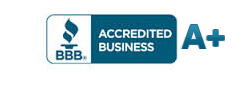By
Petra Paulson
Child proofing your home is one of the most important steps parents can undertake to ensure the safety and well-being of children. Child proofing involves assessing a home’s rooms and determining what types of features create a dangerous or hazardous environment for children, and taking steps to correct those areas. Each room poses its own threats and must be examined carefully to ensure that children can move from one room to the next without fear of safety. It is important to consider past statistics and facts regarding child accidents and fatalities as this information is crucial for developing a child safety plan that is effective and based upon current information. Child proofing your home is one of the most important steps any parent or childcare giver may take to ensure the well-being of children. Do not neglect this very important aspect of childcare.
Living Room
The living room poses a number of hazards to babies and children. One of the most dangerous threats in any living room is unstable furniture. Take steps to remove or secure large pieces that may tip and fall on baby. TVs, bookcases, and large entertainment stands pose a threat to baby’s safety. Other areas of concern include window treatments, electrical outlets and wall sockets, plants, and furniture corners. Make certain that children will not have easy access to the front or back door while playing in the living room.
Bedrooms
Bedrooms pose specific dangers for infants and children including dangers from unsafe cribs and bunk beds to window blinds and cords. Cribs and bunk beds should be chosen carefully and it is important to understand the dangers associated with both. Many Roman blinds have been recalled due to the threat of strangulation from the cords; these should be removed from the nursery. Safety plugs should be used in all wall outlets and cords should be kept out of children’s reach. Windows must have proper safety methods in place to prevent curious children from opening them, and possibly falling out. Choose floor coverings wisely and make certain any rugs or carpets are firmly affixed to the floor and are slip proof.
Bathroom
The bathroom holds several dangers to children and infants. As many medicines are kept in bathroom cabinets, it is imperative that parents and childcare givers remove these from children’s reach. Other hazards include dangers from slips and falls, water related accidents such as drowning, and electric shock. Infants should never be left unattended in the bathtub and precautions must be taken to ensure a child’s safety. Childproofing the bathroom is one of the most important steps to take to ensure a child’s well-being.
Kitchen
Several dangers lurk in kitchens including chemical poisonings, scalding burns, and falls. Childcare givers and parents must make certain not to store chemicals or household kitchen cleaners in cabinets where children have access to them. Careful attention must be paid during times of cooking to prevent children from becoming burned. Medicines must be out of reach as well. Children’s furniture, such as high chairs and walkers must be sturdy and stable to prevent falls and other injuries.
Basement/Garage
Basements and garages pose specific threats as the rooms often hold numerous poisons and toxic chemicals as well as sharp tools. Paint, lacquer, bleach, car products, and poisons must be secured and out of children’s reach. Ensure that access to basements and garages is secure and that children do not have easy access to them. Make certain that electrical outlets are properly covered and use locking devices on cabinets.
- Pesticide Poison Prevention Checklist: Learn how to keep children safe from pesticides with this PDF document from the Environmental Protection Agency.
- Garage Safety: The University of Colorado Hospital provides an interactive site that helps point out potential hazards and dangers to children.
- Never Leave your Child Alone in a Vehicle: The Kansas Department of Health and Environment provides information and statistics on child fatalities in vehicles. The information is applicable to all states.
- Children and Poisoning: Purdue University discusses the most common forms of poisoning in children under the age of 5-years-old and offers solutions for those storing hazardous materials in their basements and garages. (PDF)
- Carbon Monoxide-Your Safe Home: The University of Minnesota Extension discusses the dangers of carbon monoxide and steps parents and child care givers can take to protect children and family members from the deadly gas.
- Medication Safety for Children: The Archives of Pediatrics and Adolescent Medicine shares safety tips regarding administering medication for children.
- Safety Tips in the Kitchen: The Hospital for Special Surgery provided this resource list of tips for parents keeping children safe in the kitchen.
- Parent Tips for Food, Family, and Fun: This PDF guide from the University of Florida IFAS Extension looks at steps to childproof kitchens and keep them safe.
- Kids in the Kitchen: The Family Times Newsletter from the West Virginia University provides numerous tips and resources for parents of children from 5-8-years-old regarding safety in the kitchen.
- Food Safety Tips for Kids: the Clemson Cooperative Extension discusses kitchen, microwave, and food safety in the kitchen in this PDF document.
- Guide to Home Safety: Television Tip Over: This PDF document from the Children’s Hospital of Philadelphia discusses tips used to prevent injuries from televisions falling on children.
- Home Safety: A Checklist for Parents: PDF document from Iowa State University that discusses ways parents may prevent childhood accidents and injuries in the home.
- Electrical Fire Safety and Extension Cords: Resources from the U.S. Fire Administration regarding the hazards of electrical fires in the home.
- Fireplace Safety in the Home: The City of Cottage Grove, Minnesota provides safety tips for those with children in the home that are applicable to nationwide.
- Baby Proofing Your Home: The Child Fatality Review Committee of Cuyahoga County Family and Children First Council discusses way to childproof your home with many tips for keeping living rooms safe.
- Protecting Children from Unintentional Injuries: The University of Missouri discusses steps parents may take to keep infants safe in bedrooms.
- The Safe Nursery: The United States Consumer Product Safety Commission discusses child safety in the nursery in this 20-page PDF booklet.
- Choosing Safe Toys for Children from Birth to 12-years-old: The Virginia Cooperative Extension of Virginia Tech provides a PDF publication that discusses choosing child safe toys for children.
- Child Care Furnishings Safety Checklist: Resources from the University of Nebraska Lincoln regarding furnishings in a child’s environment and safety.
- Crib Safety: The Children’s Hospital of Pittsburgh shares these tips for selecting a safe baby crib.
- Bathroom Safety for Children: Medline Plus discusses bathroom safety for children and how to prevent accidents.
- Protect Your Child Against Bathtub Drowning: This PDF publication from the Nassau County Department of Health provides safety tips and a checklist for keeping infants safe during bath time.
- Safety Begins at Home in the Bathroom: This PDF document from the University of Georgia Cooperative Extension discusses the importance of preventing injuries and drug overdoses from occurring in the bathroom.
- Preventing Scald Burns: The Burn Institute discusses steps parents may take to prevent scald burns in the bathroom and kitchen.
- Your Home doesn’t come with a Lifeguard: PDF publication from the American Red Cross regarding keeping children safe near water, including the bathroom.





